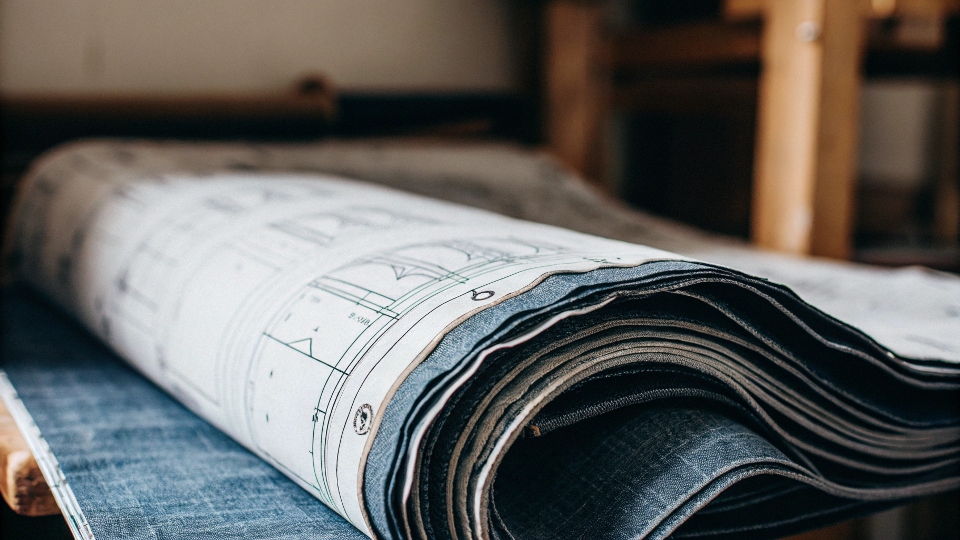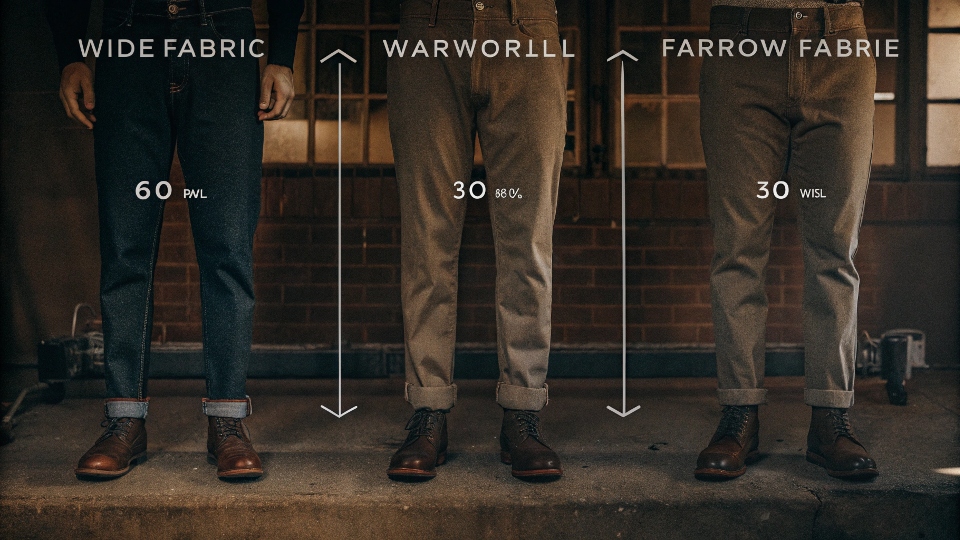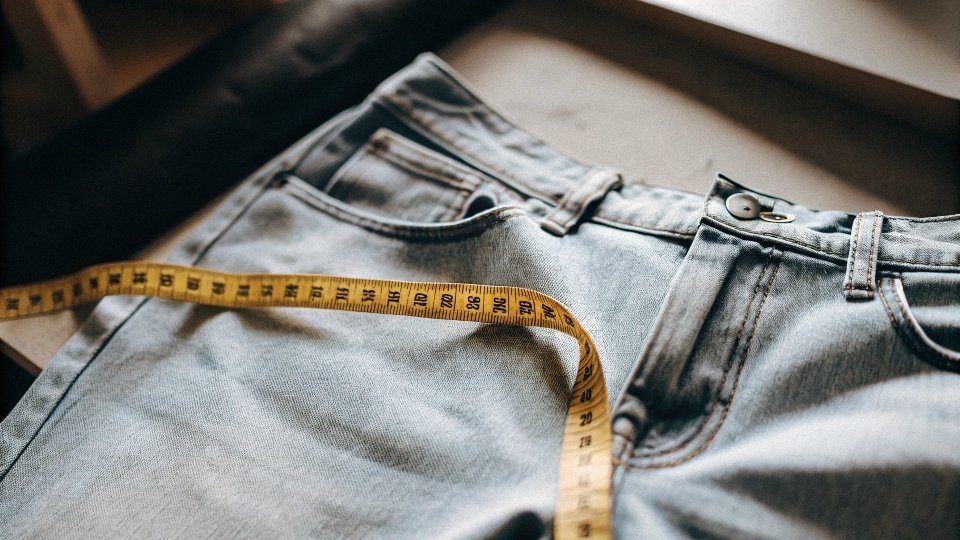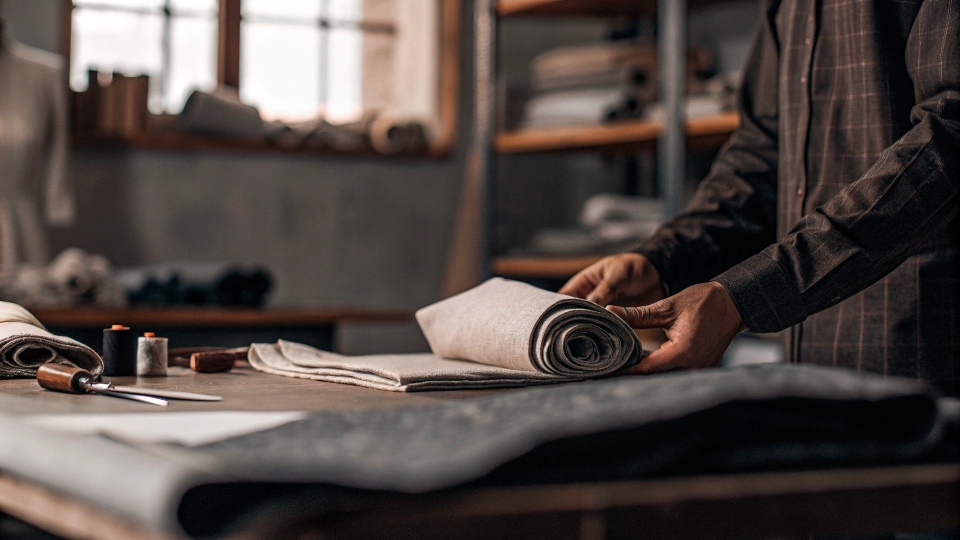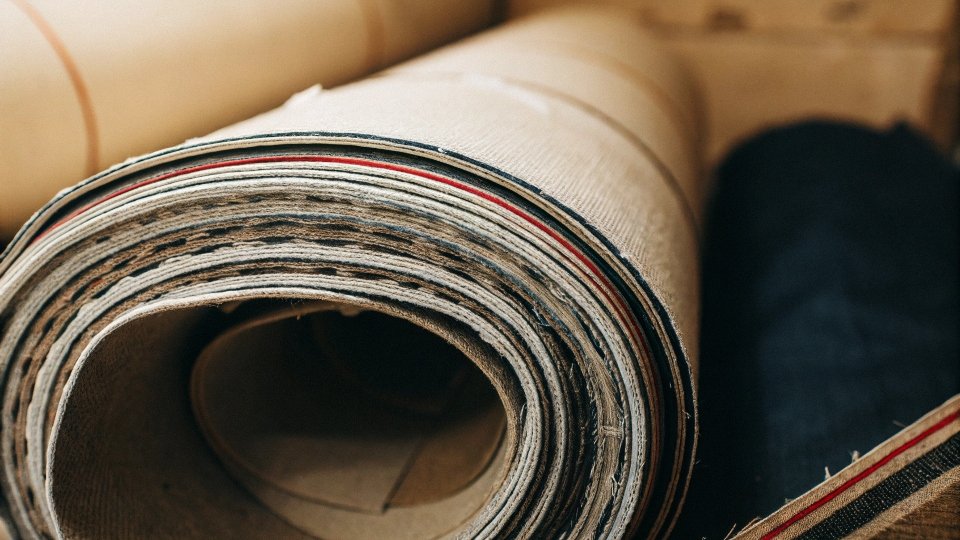You're ready to make jeans but stuck on one critical question: how much fabric? Buying the wrong amount wastes money or, worse, kills the entire project before you even start knowing the right amount.
For a standard pair of adult jeans using wide denim (58-60 inches), you'll need about 1.5 to 2 yards. However, the exact amount depends heavily on the jean's size, style, and especially the width of the denim fabric you choose.
This question is at the very heart of my business. When a client like Dean, a top-tier designer, brings me a new jean design1, the first thing my team and I calculate is the "yield"—how much fabric one garment requires.
It's the foundation of costing and production planning. This isn't just a hobbyist question; it's a professional one that determines the profitability and efficiency of a large-scale manufacturing run. The answer separates amateurs from professionals, so let's break it down properly.
How much denim is needed to make jeans?
You know a number, but you also know it's not that simple. Factors like size, style, and fabric width2 make you worry that you'll still get the calculation wrong and end up with a failed project.
The three key factors are the jean's size, the complexity of the style, and most importantly, the width of the denim roll. A wider fabric roll requires significantly less yardage than a narrower one for the same pair of jeans.
In my factory, we create something called a "marker" for every single style. A marker3 is a digital map of how all the pattern pieces—the legs, yoke, waistband, pockets, fly—are laid out on the fabric to minimize waste. The number one variable that changes this map is the fabric width.
Most standard denim comes in rolls that are 58 to 60 inches wide. This width allows us to place the two large leg panels side-by-side. But if the fabric is narrower, that's impossible. Other factors also matter. A size 42 waist needs more fabric than a size 28. A carpenter jean with extra tool pockets and hammer loops will need more fabric than a simple five-pocket design. It's a puzzle of geometry and efficiency we solve every day.
| Jean Component | Average Consumption | Key Factor Influencing It |
|---|---|---|
| Leg Panels (Front & Back) | ~1.25 yards | Jean inseam length and leg width (slim vs. baggy) |
| Pockets, Fly, Yoke | ~0.25 yards | Style complexity; more pockets equals more fabric |
| Waistband & Belt Loops | ~0.25 yards | The waist size of the garment |
How many yards does it take to make jeans?
You need clear numbers to work with. Vague ranges are frustrating when you're about to spend money on expensive fabric. You want a confident, practical answer you can take to the fabric store.
For most common adult sizes using standard 58-60 inch wide denim, a safe purchase is 1.75 to 2 yards. For very large sizes or complex designs4 with extra pieces, buying a full 2 yards provides a safe buffer.
Let's do some simple math to see why. The longest single piece of a jean is the leg panel. For an average adult, this piece is about 42-44 inches long. Since 36 inches make up a yard, just the length of one leg is already about 1.2 yards. On a wide piece of fabric, you can fit both leg panels within that length.
The remaining pieces, like the waistband, the back yoke, the pocket bags, and the fly, can usually fit into the space around the main leg panels. This is why 1.5 yards is the absolute minimum, but it leaves zero room for error. As a factory owner, I never work without a buffer.
That's why I strongly recommend buying at least 1.75 or, even better, 2 yards. This small extra amount gives you a "cutting window" to account for any small fabric flaws or a slight mistake in cutting.
| Jean Size (Waist) | Fabric Width (Standard 60") | Recommended Yardage |
|---|---|---|
| Small (28-32") | 60 inches | 1.75 yards |
| Medium (32-36") | 60 inches | 1.75 - 2.0 yards |
| Large (38-42") | 60 inches | 2.0 - 2.25 yards |
Is 2 yards enough for pants?
You often see "2 yards" as a common suggestion online for sewing projects. But is it a universal rule? You worry it might not apply to your specific project, especially if you're making pants from a different fabric.
Yes, for most standard pants made from fabric that is 45 to 60 inches wide, 2 yards is a safe and often generous amount. This typically provides enough material for most sizes and styles, including a buffer for adjustments.
While this is a good general rule, there are critical exceptions that we handle in professional manufacturing. The type of fabric can change the yardage requirement, even if the width is the same. The first major exception is fabric with a directional pattern, like a large plaid or stripe.
To make the pants look good, you have to do "pattern matching," where the lines on one leg panel match up perfectly with the lines on the other. This requires very specific placement and often creates more waste, so you need more fabric. The second exception is for napped fabrics like corduroy or velvet. These fabrics have a texture that runs in one direction.
If you cut one leg with the nap running up and the other with the nap running down, they will look like two different colors. All pieces must be cut in the same direction, which limits how you can lay out your pattern and increases the yardage needed.
| Fabric Type | Yardage Consideration | Why It Matters |
|---|---|---|
| Solid Color (like Denim) | Standard calculation applies | Pieces can be placed freely to maximize efficiency. |
| Plaid or Patterned | Add 25% more yardage5 | Requires extra fabric to align patterns at the seams. |
| Napped (like Corduroy) | Add 15-20% more yardage | All pieces must be cut in one direction, reducing layout options. |
How many yards to make selvedge denim?
Selvedge denim is beautiful but also very expensive per yard. The thought of buying too much—or even worse, too little—of this premium fabric is nerve-wracking. You absolutely need to get this right.
You will need significantly more yardage for selvedge denim6, typically between 2.5 and 3 yards for a single pair of jeans. This is because selvedge fabric is only about half the width of standard denim.
This is the most important distinction in denim yardage, and it goes back to fabric width. Standard denim is 58-60 inches wide. Selvedge denim is woven on old-style shuttle looms and is only about 30-32 inches wide. The entire point of using selvedge is to feature the beautifully finished edge (the "self-edge") on the outseam of the jean leg.
This means you must align your pattern pieces right up against that edge. Because the fabric is so narrow, you cannot place two leg panels side-by-side. You have to place them one after the other, down the length of the roll. This effectively doubles the amount of fabric needed just for the legs.
I explain this to every designer who wants to work with selvedge.The premium price of a selvedge jean isn't just because the fabric itself is higher quality; it's also because the material consumption is so much higher.
| Feature | Standard Denim (60") | Selvedge Denim (30") |
|---|---|---|
| Fabric Width | ~60 inches | ~30 inches |
| Pattern Layout | Legs side-by-side | Legs end-to-end |
| Estimated Yardage | 1.5 - 2 yards | 2.5 - 3 yards |
| Material Efficiency | High | Low |
Conclusion
For standard jeans, 2 yards is safe; for narrow selvedge, plan on 3 yards. Always remember that the fabric's width is the most critical factor in determining how much you will truly need.
-
Explore how different jean designs impact the amount of fabric needed, helping you plan better for your sewing projects. ↩
-
Understanding fabric width is crucial for accurate yardage calculations, ensuring you buy the right amount for your project. ↩
-
Learn about markers and their role in optimizing fabric use, which is essential for efficient production. ↩
-
Learn how complex designs require more fabric, helping you plan your purchases effectively. ↩
-
Discover how yardage is calculated for various garments, ensuring you purchase the right amount of fabric. ↩
-
Find out why selvedge denim requires more fabric and is priced higher, helping you make informed purchasing decisions. ↩

